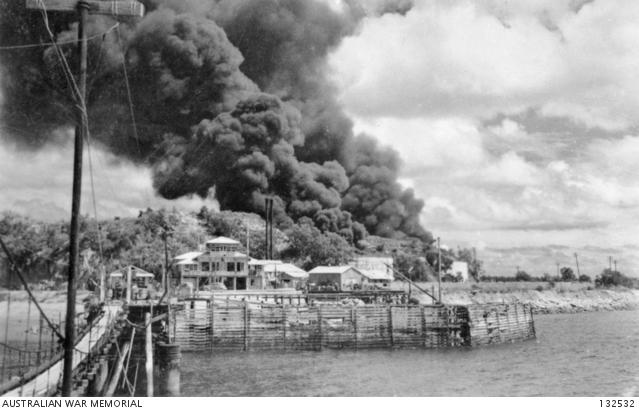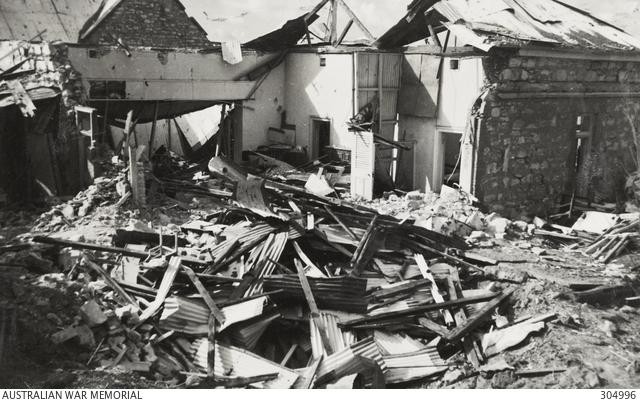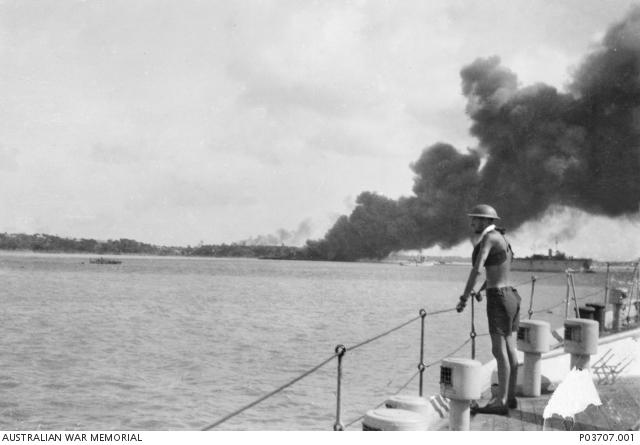Backgrounder: Memorial unveils one-of-a-kind Changi manuscript
The Australian War Memorial recently acquired a unique manuscript Government in two worlds: an introductory survey of the governments of Britain and Australia, written by Sir Alexander “Alick” Russell Downer KBE during his captivity at Changi prisoner-of-war camp.
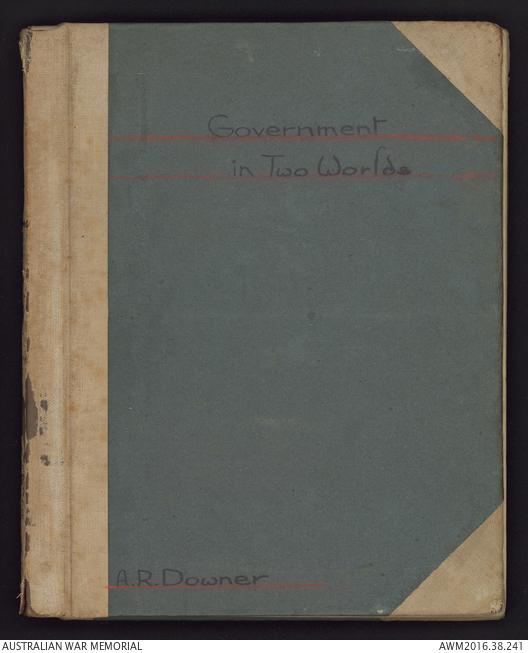
AWM2016.38.241
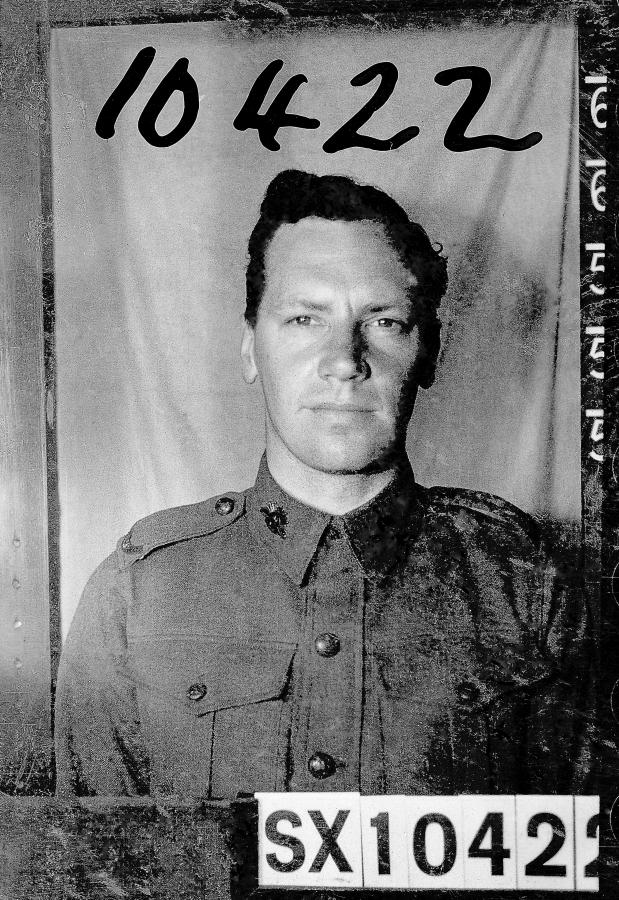
1 NAA: B883, SX10422
This unpublished monograph was researched, written, typed, and bound during Downer's captivity in Changi between February 1942 and September 1945. It was based on the lectures given by Downer at the AIF Education Centre, nicknamed “Changi University”, on the governments of Australia, its allies, and its enemies.
This rare object complements the Memorial’s existing collection of Changi artefacts and highlights a lesser-known element of the prison camp’s notorious history.
Following the Allied surrender to the Japanese on 15 February 1942, 50,000 British and Australian prisoners of war were marched into the British barracks at Changi. Their captors rarely intervened in the camp’s operation, and the prisoners mostly took responsibility for their own administration. This relative autonomy meant that the men could develop things such as the Education Centre program, which Mr Downer was instrumental in establishing.
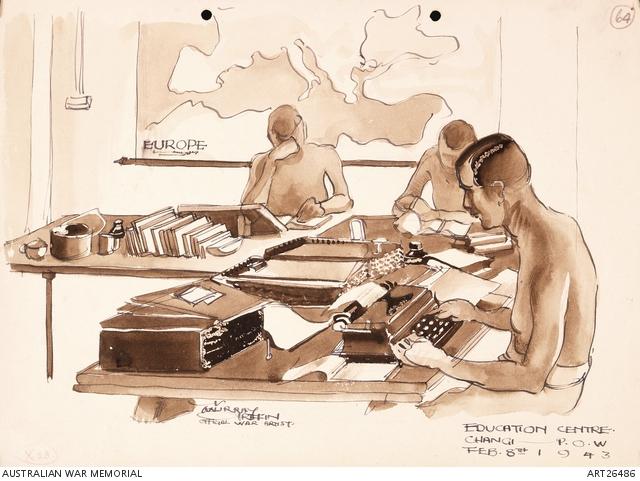
ART26486 Education centre, Changi.
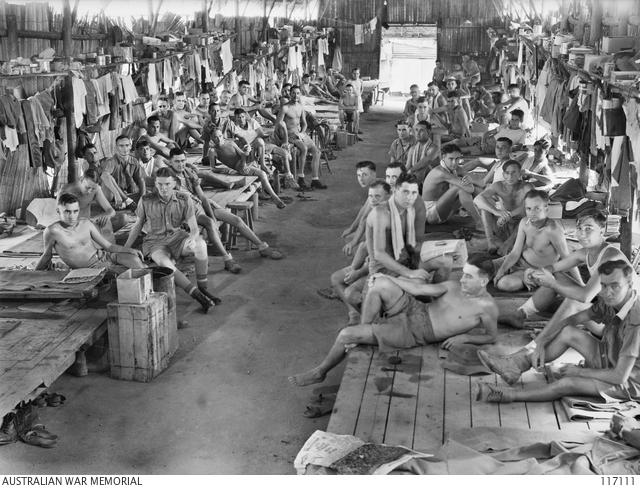
Personnel of C Company, 2/29th Battalion, in their hut at the rear of Changi Gaol, 1945.
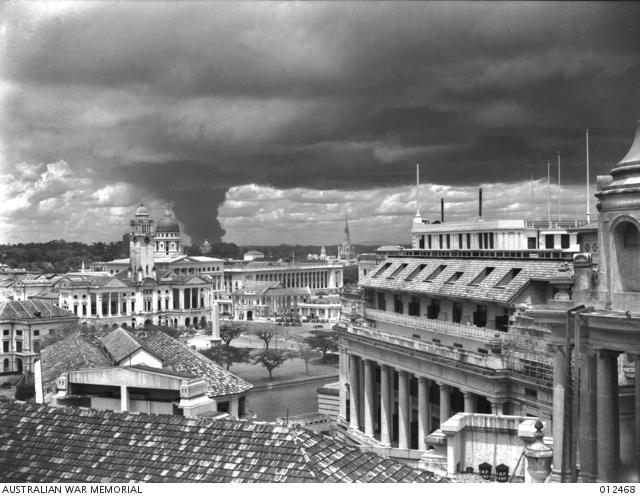
AWM012468 Smoke from fires at the Singapore Naval Base, February 1942.
With the addition of the Downer manuscript the Memorial now holds three books from Changi’s prisoner-of-war library, bound and repaired at the camp’s book bindery, and two from the Civilian Internment Camp library.
Related Second World War anniversaries
The unveiling of the manuscript falls on the 75th anniversary of the fall of Singapore. Other 75th anniversaries this week include:
Sinking of the SS Vyner Brooke, 14 February 1942
The SS Vyner Brooke was a British-registered cargo vessel. At the outbreak of the war she was requisitioned by Britain’s Royal Navy as an armed trader.
On the evening of 12 February 1942 the Vyner Brooke was one the last evacuee ships to depart Singapore. In addition to its 47 crew, it sailed south with 181 passengers, mostly women and children. Among the passengers were the last members of the Australian Army Nursing Service in Singapore. Vyner Brooke was attacked late the next afternoon by a Japanese aircraft, but suffered no serious casualties. At sunset it made a run for the Banka Strait. Prowling Japanese warships impeded its progress, and by daylight the next day it was dangerously exposed on a flat sea.
Not long after 2 pm on 14 February the Vyner Brooke was attacked by several Japanese aircraft. Despite evasive action, the ship was crippled by several bombs. Within half an hour it had rolled over and sunk bow first. Approximately 150 of her passengers survived.
Banka Island Massacre, 16 February 1942
The survivors of the SS Vyner Brooke eventually made it ashore at Banka Island, after periods of between eight and 65 hours in the water. The island had already been occupied by the Japanese and those survivors who could walk headed off into the jungle to surrender.
As the nurses tended the wounded on the beach they were joined by another party of civilians and up to 60 Commonwealth servicemen and merchant sailors who had made it ashore after their own vessels were sunk. Hours later a party of Japanese troops arrived. Marching the men around the headland, they executed them with bayonet. The 22 Australian nurses and one British civilian woman were ordered to wade into the sea, at which point they were shot from behind. Only two survived the massacre – Sister Vivian Bullwinkel, who lay as if dead in the water, and British Private Cecil Kinsley. After hiding in the jungle for several days the pair eventually gave themselves up. Kinsley died a few days later from his wounds, and Bullwinkel spent the rest of the war as a prisoner of the Japanese.
Of the 65 Australian who nurses embarked upon the Vyner Brooke, 12 were killed during the air attack or drowned following the sinking, 21 were murdered on Radji Beach, and 32 became internees, eight of whom subsequently died before the end of the war.
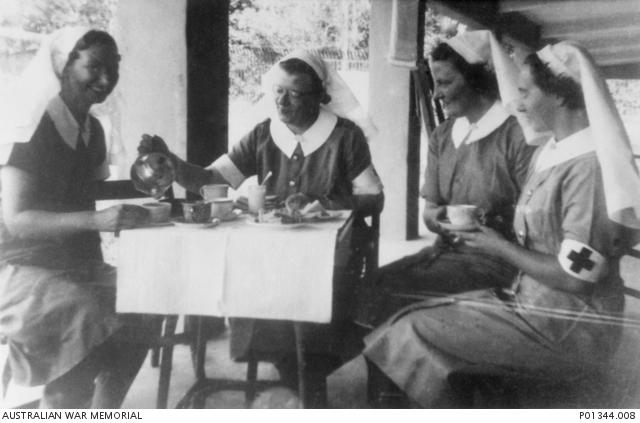
P01344.008 Four sisters of the 2/13th Australian General Hospital enjoy a cup of tea, including Sister Vivian Bullwinkel.
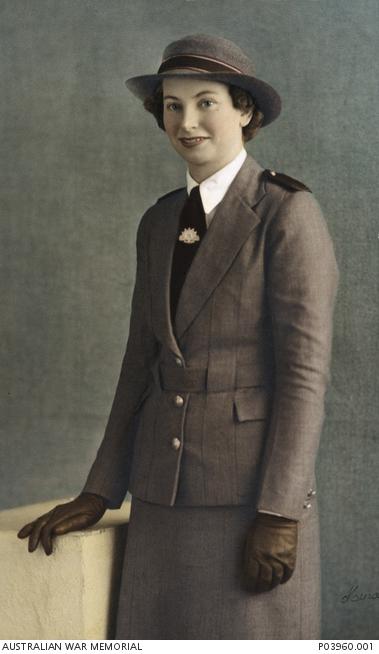
P03960.001 Staff Nurse Vivian Bullwinkel, Australian Army Nursing Service.
Bombing of Darwin, 19 February 1942
On 19 February 1942 Japanese bombs fell on mainland Australia for the first time. Throughout the day the port and city of Darwin suffered two devastating attacks by more than 188 Japanese aircraft.
Darwin was a supply base and transit camp for troops, aircraft, and ships moving north to the war in the Pacific. Defences for the town and harbour were minimal. When the first attacks came, many of those manning anti-aircraft defences fought bravely, but they were too few in number to prevent massive damage being inflicted. At least 250 people were killed in the attacks.
For the first time, industrial war had come to the Australian mainland. Over the next 20 months northern Australia was to endure almost 100 air raids, from Exmouth in the west to Townsville in the east. At the same time, Japanese submarines attacked merchant vessels off the coast of eastern Australia.
Reactions to these attacks varied across Australia. For those close by the damage was obvious, the response immediate, and the terror all too real.
Japanese aircraft continued to harass Darwin and the surrounding area until 12 November 1943. The final attack on Batchelor, 150 kilometres south of Darwin, was the last enemy air raid on Australia.
Wartime articles
The fall of Singapore
Brian Farrell. Issue 17
The beginning of the end
Xavier Fowler. Issue 77
Obituary: Vivian Bullwinkel
Madeleine Chaleyer. Issue 11
The Darwin flag
Wendy Dodd. Issue 3
Air war over Australia
Chris Clark. Issue 17
Last Post Ceremonies
14 February 2017: 75th anniversary of the sinking of the SS Vyner Brooke
Sister Gp1 Annie Merle Trenerry
15 February 2017: 75th anniversary of the fall of Singapore
Private Charles Stanley Buchanan
16 February 2017: 75th anniversary of the Banka Island massacre
Sister Gp1 Lorna Florence Fairweather
19 February 2017: 75th anniversary of the bombing of Darwin
Wing Commander Archibald Robert Tindal
To access high resolution images please email media@awm.gov.au
Media Contact
Contact Name
Media team
Contact Email
Contact Phone Number
02 6243 4575
Contact Mobile Number
0409 600 038
